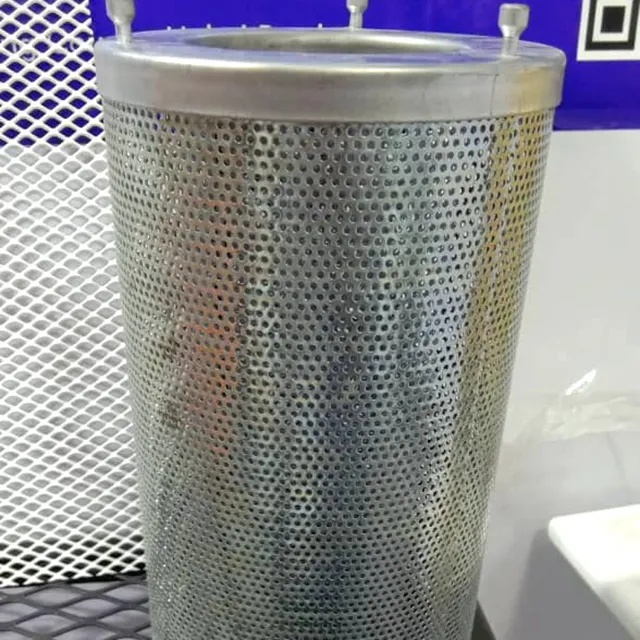 Tel:
+8615930870079
Tel:
+8615930870079
Dec . 27, 2024 12:54 Back to list
Air Purification Cartridge Solutions for Improved Indoor Air Quality
The Importance of Air Filtration Cartridges in Enhancing Indoor Air Quality
In today's world, where urbanization and industrial activities contribute significantly to air pollution, the need for clean air has never been more pressing. One effective strategy to combat indoor air pollution is the use of air filtration cartridges. These devices are essential components of various air filtration systems, designed to improve air quality and safeguard health. This article delves into the significance of air filtration cartridges, their types, and their applications.
Air filtration cartridges are integral to air purification systems found in homes, offices, and industrial environments. Their primary function is to capture airborne particles, allergens, and contaminants, ensuring that the air we breathe is not only cleaner but also healthier. They serve a critical role in removing dust, pollen, pet dander, mold spores, and smoke, which can exacerbate allergies and respiratory conditions. By eliminating these pollutants, air filtration cartridges contribute to a more comfortable and healthier living and working environment.
There are several types of air filtration cartridges, each designed for specific purposes and filtration needs. The most common types include HEPA (High-Efficiency Particulate Air) filters, activated carbon filters, and electrostatic filters.
1. HEPA Filters HEPA filters are known for their exceptional ability to capture tiny particles. They can trap 99.97% of particles that are 0.3 microns in diameter, including dust mites, pet hair, and certain bacteria and viruses. These filters are especially valuable in homes with allergy sufferers or individuals with asthma, as they effectively reduce allergens in the air.
2. Activated Carbon Filters Unlike HEPA filters, which focus on particulate matter, activated carbon filters target gases and odors. These filters are made from carbon that has been treated to create a large surface area, allowing them to absorb volatile organic compounds (VOCs) and other harmful gases released from household products, paint, or cleaning chemicals. This capability makes them ideal for kitchens and areas where strong odors are present.
air filtration cartridges

3. Electrostatic Filters Electrostatic filters use static electricity to attract and capture particles. These filters can be reusable and washable, making them a cost-effective option over time. They are effective in capturing larger particles and can also reduce the load on HEPA filters, increasing their lifespan and efficiency.
The applications of air filtration cartridges extend beyond residential use. In commercial and industrial settings, maintaining air quality is equally crucial. Factories and manufacturing plants often implement air filtration systems with specialized cartridges to manage dust, fumes, and other particulate matter that could harm employees and machinery. Hospitals also rely on filtration systems with HEPA cartridges to create sterile environments, minimizing the risk of infection and other health hazards.
When selecting an air filtration cartridge, it is essential to consider the specific air quality needs of your environment. Factors such as the presence of allergens, the type of pollutants commonly found, and the size of the space should all influence the choice of filtration system. Regular maintenance, including changing or cleaning filters as recommended, is also critical to ensure optimal performance.
Moreover, advancements in technology have led to the development of smart air filtration systems that monitor air quality levels and automatically adjust filtration rates. These systems can provide real-time data on pollutant levels, further enhancing air quality management.
In conclusion, air filtration cartridges play a vital role in protecting indoor air quality. By effectively removing contaminants and allergens, they contribute significantly to the health and well-being of individuals in various environments. With a range of filter types available, it is crucial to choose the right cartridge for your specific needs, ensuring a cleaner and safer atmosphere for all. As we continue to face the challenges of air pollution, investing in effective air filtration solutions will remain a priority in creating healthier spaces for living and working.
-
Types and Applications of Air Filtration CartridgesNewsJul.28,2025
-
The Role of Gas Turbine FiltersNewsJul.28,2025
-
Mastering Air Filter Cartridge UseNewsJul.28,2025
-
Advanced Turbine Filters for Modern Gas TurbinesNewsJul.28,2025
-
Cellulose Air Filter Cartridge Advantages in Dust FiltrationNewsJul.28,2025
-
Cellulose Filters for Air Particle ReductionNewsJul.28,2025

 Email:
Email:





